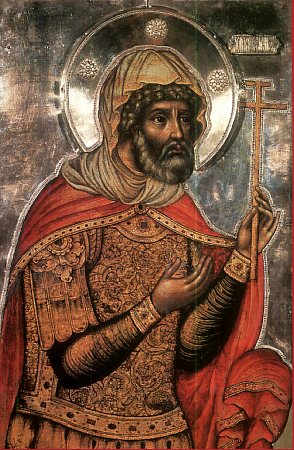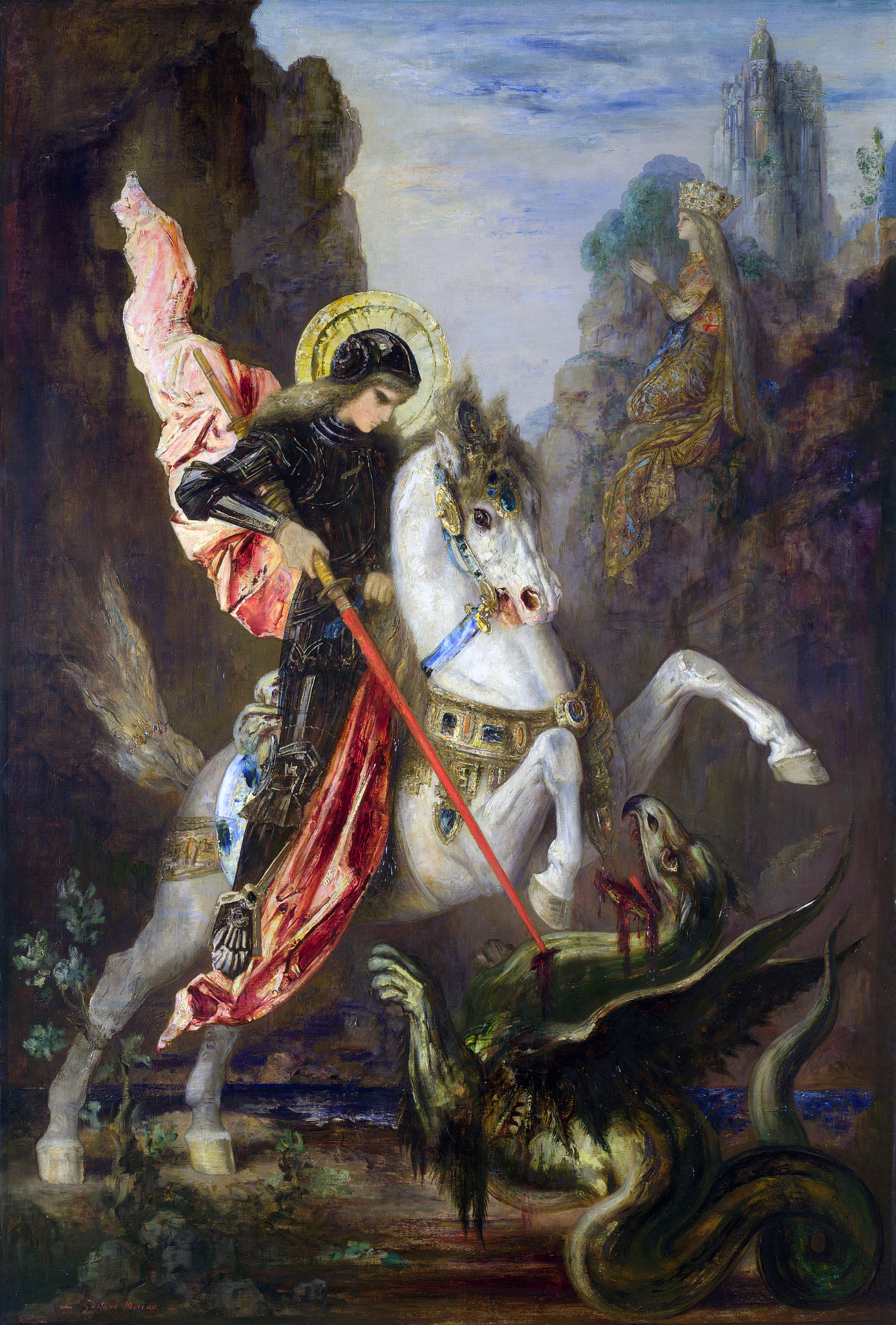|
Roar (1997 TV Series)
''Roar'' is a fantasy adventure television series created by Shaun Cassidy and Ron Koslow. The series originally aired on the Fox network from July 14 until September 1, 1997. It is set in the year 400 AD, following a young Irish man, Conor (Heath Ledger), as he sets out to rid his land of the invading Romans, but in order to accomplish this, he must first unite the Celtic clans. The series also starred Vera Farmiga, Lisa Zane, John Saint Ryan, and Sebastian Roché. ''Roar'' was cancelled after 8 episodes due to low ratings, and the final 5 episodes were not broadcast by the network until 2000. Plot ''Roar'' chronicles the life of Conor (Ledger), a 20-year-old orphaned prince who must rise above tragedy to lead his people to freedom. Conor takes on a band of ragtag allies that include Tully (Greer), a teenage apprentice magician; Catlin (Farmiga), a beautiful former slave; and Fergus (Ryan), Conor's big-hearted, ebullient protector. Their primary struggle is against Longinus (Roch ... [...More Info...] [...Related Items...] OR: [Wikipedia] [Google] [Baidu] |
Fantasy
Fantasy is a genre of speculative fiction involving Magic (supernatural), magical elements, typically set in a fictional universe and sometimes inspired by mythology and folklore. Its roots are in oral traditions, which then became fantasy literature and drama. From the twentieth century, it has expanded further into various media, including film, television, graphic novels, manga, animations and video games. Fantasy is distinguished from the genres of science fiction and horror fiction, horror by the respective absence of scientific or macabre themes, although these genres overlap. In popular culture, the fantasy genre predominantly features settings that emulate Earth, but with a sense of otherness. In its broadest sense, however, fantasy consists of works by many writers, artists, filmmakers, and musicians from ancient mythology, myths and legends to many recent and popular works. Traits Most fantasy uses magic (paranormal), magic or other supernatural elements as a ma ... [...More Info...] [...Related Items...] OR: [Wikipedia] [Google] [Baidu] |
Irish People
The Irish ( ga, Muintir na hÉireann or ''Na hÉireannaigh'') are an ethnic group and nation native to the island of Ireland, who share a common history and culture. There have been humans in Ireland for about 33,000 years, and it has been continually inhabited for more than 10,000 years (see Prehistoric Ireland). For most of Ireland's recorded history, the Irish have been primarily a Gaelic people (see Gaelic Ireland). From the 9th century, small numbers of Vikings settled in Ireland, becoming the Norse-Gaels. Anglo-Normans also conquered parts of Ireland in the 12th century, while England's 16th/17th century conquest and colonisation of Ireland brought many English and Lowland Scots to parts of the island, especially the north. Today, Ireland is made up of the Republic of Ireland (officially called Ireland) and Northern Ireland (a part of the United Kingdom). The people of Northern Ireland hold various national identities including British, Irish, Northern Irish or som ... [...More Info...] [...Related Items...] OR: [Wikipedia] [Google] [Baidu] |
Saint Longinus
Longinus () is the name given to the unnamed Roman soldier who pierced the side of Jesus with a lance and who in medieval and some modern Christian traditions is described as a convert to Christianity. His name first appeared in the apocryphal Gospel of Nicodemus. The lance is called in Christianity the "Holy Lance" ('' lancea'') and the story is related in the Gospel of John during the Crucifixion. This act is said to have created the last of the Five Holy Wounds of Christ. This person, unnamed in the Gospels, is further identified in some versions of the legend as the centurion present at the Crucifixion, who said that Jesus was the son of God, so he is considered as one of the first Christians and Roman converts. Longinus' legend grew over the years to the point that he was said to have converted to Christianity after the Crucifixion, and he is traditionally venerated as a saint in the Roman Catholic Church, Eastern Orthodox Church, and several other Christian communions. O ... [...More Info...] [...Related Items...] OR: [Wikipedia] [Google] [Baidu] |
Druidism
A druid was a member of the high-ranking class in ancient Celtic cultures. Druids were religious leaders as well as legal authorities, adjudicators, lorekeepers, medical professionals and political advisors. Druids left no written accounts. While they were reported to have been literate, they are believed to have been prevented by doctrine from recording their knowledge in written form. Their beliefs and practices are attested in some detail by their contemporaries from other cultures, such as the Romans and the Greeks. The earliest known references to the druids date to the 4th century BCE. The oldest detailed description comes from Julius Caesar's ''Commentarii de Bello Gallico'' (50s BCE). They were described by other Roman writers such as Cicero, Cicero (44) I.XVI.90. Tacitus, and Pliny the Elder. Following the Roman invasion of Gaul, the druid orders were suppressed by the Roman government under the 1st-century CE emperors Tiberius and Claudius, and had disappeare ... [...More Info...] [...Related Items...] OR: [Wikipedia] [Google] [Baidu] |
Celtic Mythology
Celtic mythology is the body of myths belonging to the Celtic peoples.Cunliffe, Barry, (1997) ''The Ancient Celts''. Oxford, Oxford University Press , pp. 183 (religion), 202, 204–8. Like other Iron Age Europeans, Celtic peoples followed a polytheistic religion, having many gods and goddesses. The mythologies of continental Celtic peoples, such as the Gauls and Celtiberians, did not survive their conquest by the Roman Empire, the loss of their Celtic languages and their subsequent conversion to Christianity. Only remnants are found in Greco-Roman sources and archaeology. Most surviving Celtic mythology belongs to the Insular Celtic peoples (the Gaels of Ireland and Scotland; the Celtic Britons of western Britain and Brittany). They preserved some of their myths in oral lore, which were eventually written down by Christian scribes in the Middle Ages. Irish mythology has the largest written body of myths, followed by Welsh mythology. The supernatural race called the Tuatha ... [...More Info...] [...Related Items...] OR: [Wikipedia] [Google] [Baidu] |
Christian Mythology
Christian mythology is the body of myths associated with Christianity. The term encompasses a broad variety of legends and narratives, especially those considered sacred narratives. Mythological themes and elements occur throughout Christian literature, including recurring myths such as ascending to a mountain, the ''axis mundi'', myths of combat, descent into the Underworld, accounts of a dying-and-rising god, a flood myth, stories about the founding of a tribe or city, and myths about great heroes (or saints) of the past, paradises, and self-sacrifice. Various authors have also used it to refer to other mythological and allegorical elements found in the Bible, such as the story of the Leviathan. The term has been applied to myths and legends from the Middle Ages, such as the story of Saint George and the Dragon, the stories of King Arthur and his Knights of the Round Table, and the legends of the ''Parsival''. Multiple commentators have classified John Milton's epic poe ... [...More Info...] [...Related Items...] OR: [Wikipedia] [Google] [Baidu] |
Spear Of Destiny
A spear is a pole weapon consisting of a shaft, usually of wood, with a pointed head. The head may be simply the sharpened end of the shaft itself, as is the case with fire hardened spears, or it may be made of a more durable material fastened to the shaft, such as bone, flint, obsidian, iron, steel, or bronze. The most common design for hunting or combat spears since ancient times has incorporated a metal spearhead shaped like a triangle, lozenge, or leaf. The heads of fishing spears usually feature barbs or serrated edges. The word ''spear'' comes from the Old English '' spere'', from the Proto-Germanic ''speri'', from a Proto-Indo-European root ''*sper-'' "spear, pole". Spears can be divided into two broad categories: those designed for thrusting as a melee weapon and those designed for throwing as a ranged weapon (usually referred to as javelins or darts). The spear has been used throughout human history both as a hunting and fishing tool and as a weapon. Along with the ... [...More Info...] [...Related Items...] OR: [Wikipedia] [Google] [Baidu] |
Crucifixion Of Jesus
The crucifixion and death of Jesus occurred in 1st-century Judea, most likely in AD 30 or AD 33. It is described in the four canonical gospels, referred to in the New Testament epistles, attested to by other ancient sources, and considered an established historical event. There is no consensus among historians on the details. Christopher M. Tuckett in ''The Cambridge companion to Jesus'' edited by Markus N. A. Bockmuehl 2001 Cambridge Univ Press pp. 123–124 In the canonical gospels, Jesus is arrested and tried by the Sanhedrin, and then by Pontius Pilate, who sentences him to flagellation and finally crucifixion by the Roman Empire.''The Cradle, the Cross, and the Crown: An Introduction to the New Testament'' by Andreas J. Köstenberger, L. Scott Kellum 2009 pp. 104–108Evans, Craig A. (2001). ''Jesus and His Contemporaries: Comparative Studies'' p. 316 Jesus was stripped of his clothing and offered vinegar mixed with myrrh or gall (likely posca ... [...More Info...] [...Related Items...] OR: [Wikipedia] [Google] [Baidu] |
Jesus Christ
Jesus, likely from he, יֵשׁוּעַ, translit=Yēšūaʿ, label=Hebrew/Aramaic ( AD 30 or 33), also referred to as Jesus Christ or Jesus of Nazareth (among other names and titles), was a first-century Jewish preacher and religious leader; he is the central figure of Christianity, the world's largest religion. Most Christians believe he is the incarnation of God the Son and the awaited Messiah (the Christ) prophesied in the Hebrew Bible. Virtually all modern scholars of antiquity agree that Jesus existed historically. Research into the historical Jesus has yielded some uncertainty on the historical reliability of the Gospels and on how closely the Jesus portrayed in the New Testament reflects the historical Jesus, as the only detailed records of Jesus' life are contained in the Gospels. Jesus was a Galilean Jew who was circumcised, was baptized by John the Baptist, began his own ministry and was often referred to as "rabbi". Jesus debated with fellow Jews on ho ... [...More Info...] [...Related Items...] OR: [Wikipedia] [Google] [Baidu] |
_(14730388126).jpg)




